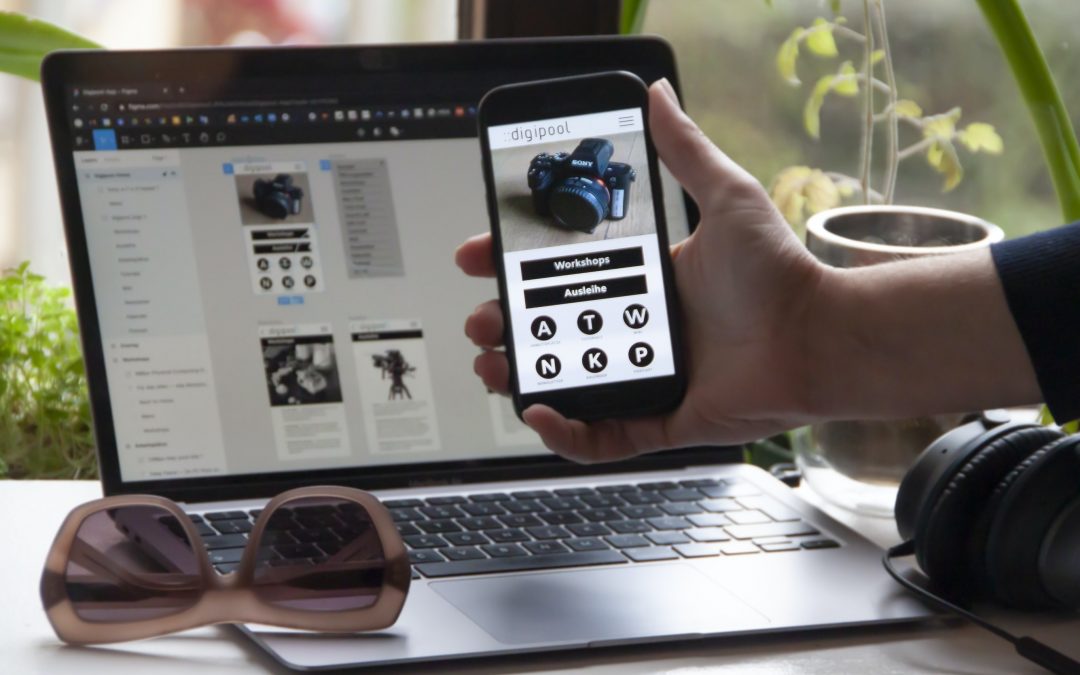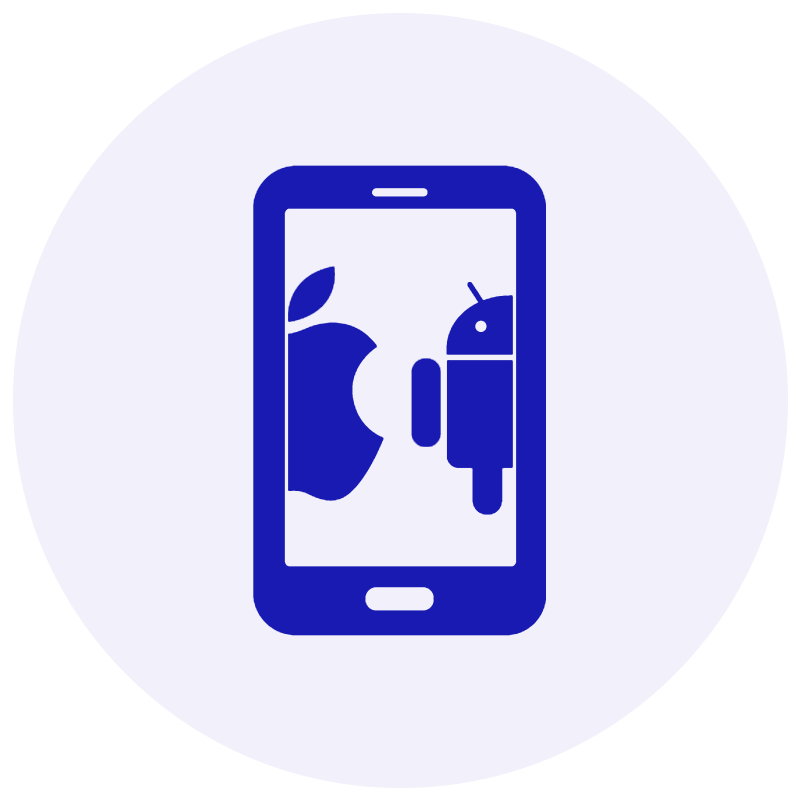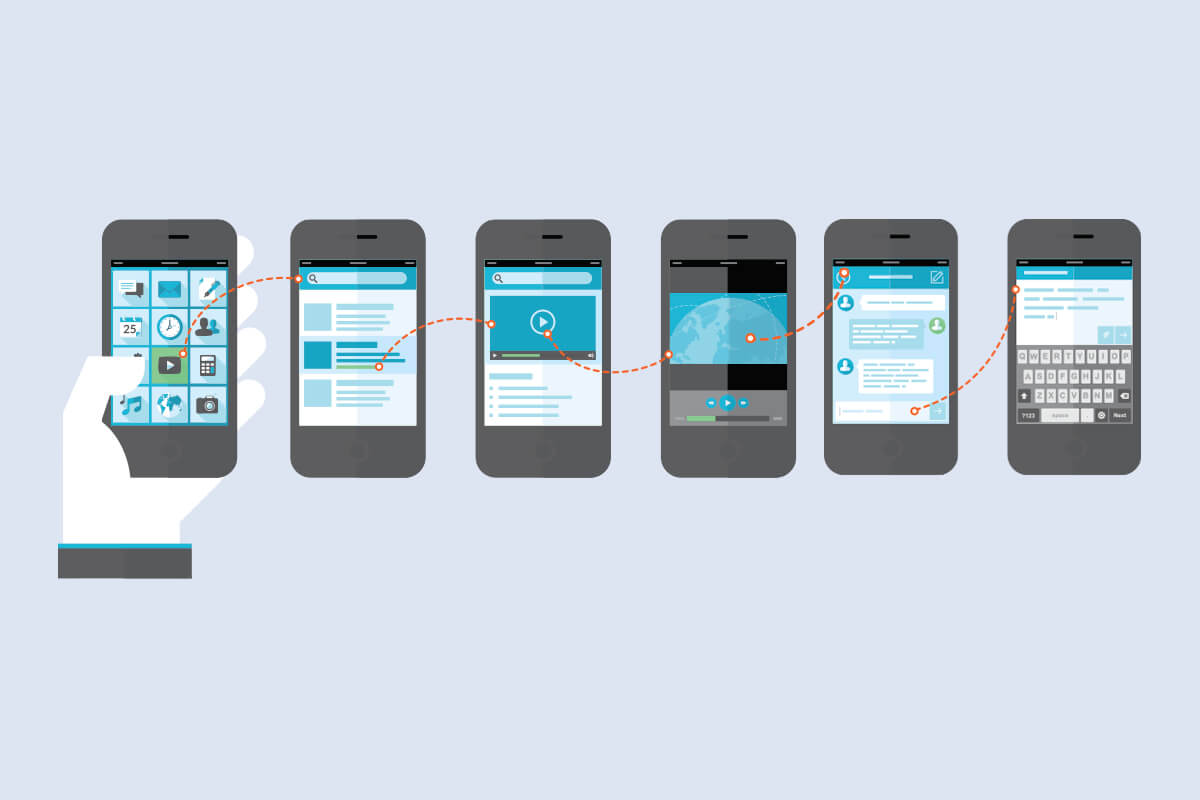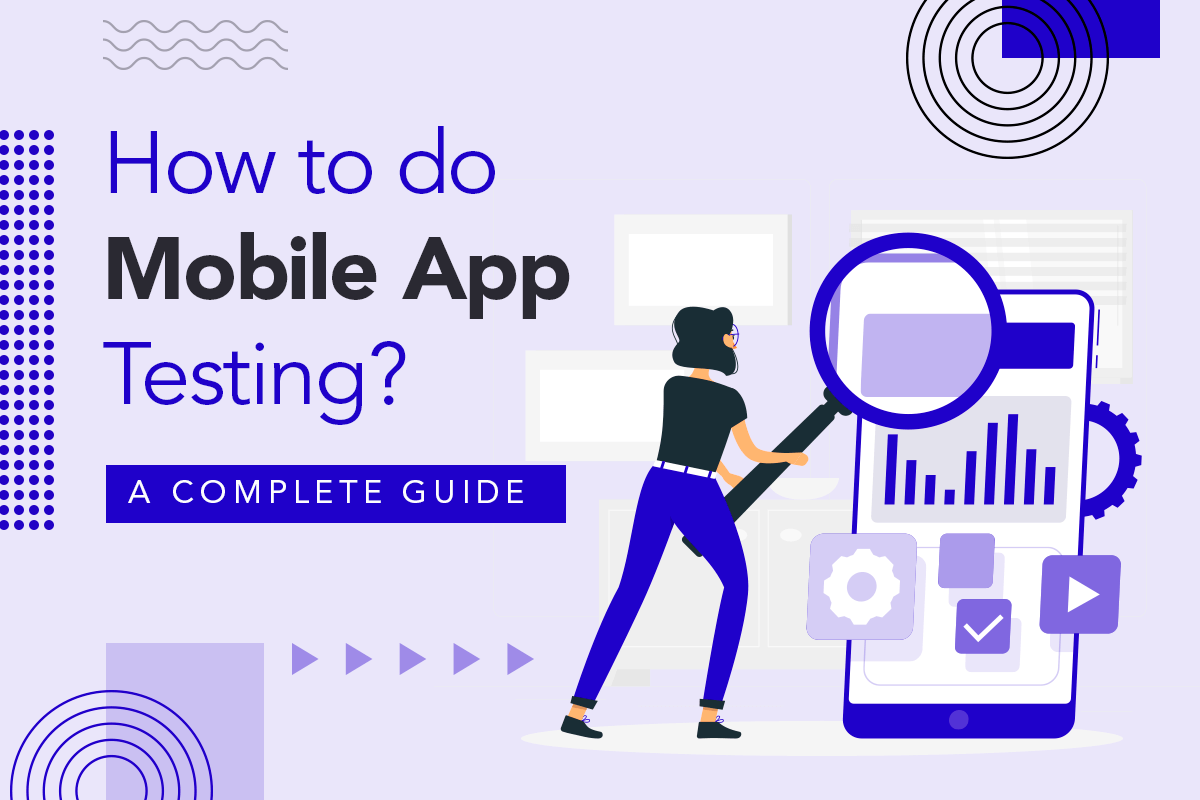
by admin | Feb 11, 2022 | Mobile App Testing, Blog |
Testing is essential for any web or app developer as it ensures the optimum performance of the product. Without testing, multiple user experience issues may not be pointed out within the development process.
This is why successful app development companies invest money, effort, human resources, and other resources in app testing.
This app testing involves testing for multiple devices, OS platforms, variations, and automation. This can be challenging, especially as devices, OS platforms, and other technologies constantly change.
With this, not all QA services are built the same. A company may use a different approach, including continuous testing, split testing, and other methods to ensure that the app performs well.
Given the multitude of testing tools available in the market, some may not be equally efficient or may even be counterproductive in some cases.
In this article, we will run you through the common challenges of app testing.
A Wide Range of Devices, Platforms, and OS Versions
In today’s tech world, consumers demand new features and functionalities on their mobile devices resulting in the introduction of new OS versions and devices now and then. The app testing process must include testing for all devices, platforms, and OS versions.
Device fragmentation is a big issue in today’s mobile app testing. With such a wide range of devices and platforms, developers must make sure that their apps work on every one of them.
It’s not always possible right out of the box, which is why additional time and effort are needed to ensure that the app works on every possible device and platform.
Most companies use emulators to detect issues and use real devices to solve the problem. They may also limit the supported devices and OS versions to a minimum. It is easier to make apps supported in the latest flagships than backdated devices and OS versions.
The Needs of the Target Audience
If you are not clear about the needs of your target audience, you will never produce a successful app.
As a developer, you must understand the need of your target audience and develop a mobile app that addresses that need. Without this knowledge, you run a high risk of developing a product that your target audience won’t use.
The testing team needs to align the user experience expectations when evaluating the functionality of the app they are developing.
Automation Testing and Actual User Testing
Many developers are under the impression that automated testing is the best method of testing. This might be true as automated testing does allow for the build, execution, and analysis of tests in a shorter period.
However, actual user testing using real devices is more appropriate for the complete app testing process. This ensures that the app is being tested on actual devices and scenarios instead of a set of automated tests.
Variations in Network Coverage
Every mobile application will be used under a variety of network conditions. Which means that multiple factors influence the speed of your app.
Apps need to be tested for various network connectivity speeds and should function in different network conditions. You may have to consider if offline access is essential for your app.
Conclusion
Testing is a critical component of app development. As discussed above, with hundreds of phones, OS versions, and devices available in the market, testing can be a challenge.
This is why it is essential to choose a reliable mobile testing services partner.
Are you looking for the top software testing companies in the USA? Codoid offers world-class testing services to ensure that your application is ready. Get in touch with us to learn more!

by admin | Feb 2, 2022 | Mobile App Testing, Blog |
The mobile app development life cycle is complex. But among these steps, testing is one of the most crucial parts of the process.
Through testing, the company identifies errors and areas for improvement. That is why firms rigorously test their apps or hire companies that offer mobile app testing services.
If your app consistently fails the testing phase, as a developer, you may have fallen into one of the pitfalls below.
Not Enough Systems Were Used for Testing
The testing phase for a mobile app is different from a website because of the many variables involved with apps. One of these is that apps need to work well in many different environments. While a site might need to work well on a few other browsers, an app needs to work correctly on many devices with varying operating systems so users can access it.
For example, Android and iOS will each require a different configuration. Even if you only release your app on one of them, you still have many further revisions of each operating system to test against. You’ll need to ensure your app works on a wide range of operating systems, not only one.
Too Many Systems Were Used for Testing
However, if you try to test your app on every operating system, you will have to deal with the time-consuming and even impossible task of making sure it works across all of them. It would lag the testing process and delay your app’s release.
Instead of trying it on every operating system in existence, make a better estimation of your end-users and their needs. Think about your end-user and the goal of your application and your company, then make an educated estimate about which systems might be the most important to test on.
Little Focus on UX/UI
User experience (UX) and user interface (UI) are crucial when it comes to mobile apps. Users expect apps that are easy to use, sleek, and well-designed, and they will remove those that aren’t from their devices.
Always take time to consider the app’s UX and UI when testing. Even the fastest and most innovative app will fail to impress if it has an off-putting user interface.
Excessive Focus on UX/UI
UX and UI are important. However, you also need to make sure not to forget the design and user interface of the app in the process. Hyper-focusing on finding bugs can affect the testing and cause delays.
A holistic app testing approach is the best way to strike a good balance between the two. Making a checklist of things to look out for can help you do this.
No Actual User Testing
Of course, software testing is an area of expertise that requires certain skills and knowledge. That is why software testing teams are employed during the app development process, but ordinary people are also a good idea.
You may think you know how to use your app, but you probably don’t know everything about it. You’re the creator, and you’ve been using it for months or even years. Your perspective is different from that of a new user. Ask them to test your app and report back to you what they feel is working and what is not.
Conclusion
Testing is an important stage in mobile app development. It identifies the errors in the application and helps improve it. That is why it’s crucial that developers test the product in the right amount of systems, give enough focus on the user experience, and allow actual users to test it. They may even hire companies that offer mobile app testing services to further ensure the quality and functionality of their application.
If you are looking for one of the best companies that offer mobile application testing services, turn to Codoid. Our experienced team of app testers can isolate errors and identify solutions to make your application as functional and as profitable as it should be. Team up with us today!

by admin | Dec 30, 2021 | Mobile App Testing, Blog, Latest Post |
Everyone knows that various mobile apps surround every business sector as they continue to be significant business enablers. All companies continue to expand their operations by creating mobile apps, as there has been a massive increase in the use of smartphones globally.
This widespread usage of these smart devices has actually peaked thanks to the heavy use of mobile apps, regardless of the industry.
Given the importance of mobile apps, it is apparent that you need to get mobile testing services to ensure that your apps are working and for them to achieve these characteristics:
Functionality of the App
Mobile apps should perform the functions that are required of them, whether it is for a company to interact with their customers or for a game to be entertaining for a user. If an app cannot perform what the customers expect from them, they will stop using the app and possibly stop supporting the company.
Impressive Performance
The user experience attracts a user to use a mobile app, and hence, the app must perform fast and smoothly to ensure the user experience is at its highest. Lags, freezes, and sudden crashes should not happen if you want people to keep using your app.
High Level of Security
Mobile apps must be highly secure, as these apps manage the data, and hence, all sensitive data must be safe. Thus, for security reasons, mobile apps should be tested first, and only when everything is working should the app be rolled out.
Usability
The mobile user interface must be easy to use, especially for first-time users, and it must allow users to get their jobs done, regardless of how hard it is to perform.
Accessibility
Mobile apps must be accessible and usable on different devices such as smartphones, tablets, and even desktop computers. Mobile apps should be compatible and accessible to users of all kinds across all sorts of devices.
Tests are Necessary to Have an App that Would Impress Potential Customers
Although mobile apps are incredibly enticing for customers and most of them are automated, it doesn’t mean that you can ignore mobile app testing. If you don’t test your app in all possible scenarios, you might end up with a buggy app that doesn’t work on some devices.
It would be a great idea to implement mobile automation testing early in the project. Testing should also be done at every new stage or chapter of the app development process to avoid having to start over should you find a problem you need to address from previous stages.
As a business, you certainly need to have an app that can solve pain points for your customers and help you reach more potential customers. However, an app that’s been created carelessly without proper and thorough testing could end up disappointing customers instead of impressing them. Therefore, you should dedicate time and effort to test your apps thoroughly. This might seem like an unnecessary extra step at first, but it will undoubtedly pay off when users find your app flawless.
Conclusion
To sum it up, getting mobile testing services allows you to check your mobile app’s performance on an actual device. You can also test your app in the environment that it would be used in. This way, all the characteristics that a mobile app should possess could be checked. Furthermore, the applications can be tested for various platforms such as Android and iOS, which allows you to ensure the quality of your app and ensure the end-users are happy with it no matter what device they’re using.
Codoid is a reputable company that offers mobile testing services that you can depend on. Contact us today to know how we can help ensure your app is ready for use by your customers!

by admin | Dec 29, 2021 | Mobile App Testing, Blog, Latest Post |
It is that time of the year when we prepare ourselves to face the challenges of the New Year with the best options available at our disposal. In this case, we will be taking a look at the best mobile app testing tools to use in 2022 as we will need nothing short of the best to compete and win in this highly competitive space. So irrespective of whether you are just starting out in mobile app testing or trying to improve yourself, choosing the right tools for each purpose plays a crucial part. Mobile app testing is not an easy task to do as there are various intricacies and complications. So in this blog, we will be exploring the foundational, yet best mobile app testing tools that you should be using in 2022 by categorizing them under their scope of usage.
Mobile App Automation Tools
As the name suggests, TestComplete is a complete tool that enables you to perform functional, GUI, unit, and regression testing. It even offers you access to a wide range of devices to test your app in parallel across different platforms, screen sizes, and screen resolutions without having to jailbreak them. Since it supports all major frameworks such as Flutter, React Native, SwiftUI, and so on, you will have no issues in performing cross-platform tests.
But if you are on the lookout for an open-source tool that can almost do everything TestComplete can look nowhere else than Appium. The biggest advantage of Appium is that you wouldn’t have to modify any code for testing on Android or iOS even if you’re using a real device or an emulator. The only downside with Appium is that if you are using C#, Python, or Java for scripting, you’ll have to look for other options as they are not supported by Appium.
Cloud-based testing platforms
Though options like TestComplete and Kobiton provide real devices to test your application, we always prefer BrowserStack for our cloud-based mobile app testing. BrowserStack is unmatchable when it comes to the range of devices available, quick addition of new devices, and technical support. If you need other options, you could look into AWS Device Farms and SauceLabs as well.
Codeless automation solutions
As a leading mobile app testing company, we believe that codeless automation solutions will not be enough to meet the demands of large test suites. Yet, we believe there is value in using codeless automation tools for simple tasks. Our recommendation would be Perfecto Mobile as it came in handy in one of our ELearning testing projects. It supports the Gherkin style frameworks and can be used to integrate the Quantum BDD framework. 21Labs is another great option due to its A.I capabilities and functionality that don’t require devices to get maximum coverage at a lower cost.
UI testing tools
There are two great exclusive UI testing tools for both Android and iOS. Espresso, a tool created by Google has been gaining a lot of popularity in the Android community. And for iOS, XCUITest is the way to go. But if you are looking for a solution that can do both, then Xamarin.UITest is the better option for you.
Performance Testing Tools
An application’s performance plays a crucial role in its success. Apptim is a great performance testing solution as it will help you test different versions of the app to gauge and compare the performance. Once the test sessions are completed, it even generates a conclusive report with the performance metrics and lists the bugs detected too. NeoLoad is also another great tool for testing your mobile app’s performance as it enables testing under various network conditions, geographical conditions, and so on to closely mimic real-world conditions.
Conclusion
This is by no means a conclusive list of the best mobile app testing tools as there are still so many different types of tools like crash reporting, test management tools, and so on which we haven’t covered here. But these are the foundational tools that you would definitely need to use or consider using this coming year.

by admin | Dec 9, 2021 | Mobile App Testing, Blog, Latest Post |
If you have been wondering if it is possible to perform mobile app testing on all mobile devices (Android & iOS) without purchasing them, the answer is yes, it is very much possible to do that. There are even a couple of options to do so as well. You can either opt for cloud-based solutions to access real devices or use simulators and emulators to mimic a device. Each of these options does have its own advantage and disadvantages, but as a leading mobile app testing company, we always prefer to use cloud-based solutions to get the best results. So in this blog, we will be listing the various cloud-based mobile app testing solutions you can use to test an app on all devices without purchasing them and explore the scope of emulators and simulators. Let’s get started.
Prioritization is the key to having an effective testing mobile app testing strategy. Your objective shouldn’t be to just test your application on every available device out there as it is not smart to do so. There is nothing wrong with being thorough, but you shouldn’t waste your time and resources on obsolete devices or devices that will not be used by your intended audience. With that said, let’s first explore cloud-based solutions.
Cloud-Based Mobile App Testing Solutions
- BrowserStack
- pCloudy
- Sauce Labs
- AWS Device Farm
- SeeTest.io
- Perfecto
- Kobiton
- Firebase Test Lab
Though this list has been mentioned in a random order, BrowserStack is undoubtedly the best choice from these options. BrowserStack keeps adding new devices instantaneously and they stand out from the crowd with their helpful blogs and tech support that can guide you through the entire mobile app testing process. But if you do feel like you want to check out all the other tools before making a choice, make sure to visit our Cloud Testing Platforms blog as we have discussed these tools individually.
Emulators
Though emulators are open-source options, they are not as effective as cloud-based solutions. They are also not easy to use as you would have to download and install the emulators for each and every device you want to test. Since emulators just mimic devices, they are also not that reliable to use. So the only possible scenarios where emulators would be effective would be when it is used during the early stages of development or for simple tests.
Now that you know the ways you can test the mobile app without buying new devices, make sure to go through our Mobile App Testing Checklist and its Peculiarities blog.
The Alternative Solution
If at all you feel overwhelmed by all these options and think you will not be able to handle the task on your own, do not fret. You can always outsource the tasks to a leading Mobile App Testing Service Company like us. We have been able to extend our mobile app testing services to large firms, start-ups, and even independent developers. The scale of the project has never been an area of concern. If you compromise on your testing, the chances of your app succeeding in the market becomes very slim. So we hope you now have a clear understanding of all the various options you can employ to get your app tested effectively.

by admin | Dec 3, 2021 | Mobile App Testing, Blog, Latest Post |
Testing apps can be a great boon to a business, whether the platforms are iOS, Android, or any other options on the market. While automated testing tools can provide a good idea of how well an app functions, it is also vital to test apps manually. Manual tests are not only more precise but can also improve the user experience of an app. To ship quality applications, businesses should utilize both kinds of testing software.
If you are in the process of developing a minimum viable product (MVP), the key is to find methods that will deliver quality output while scaling back on cost and time-to-market. This blog post will shed light on manual and automated testing and when to use them to drive results.
Automated vs Manual Mobile App Testing: Which Is Better?
Automated testing tools are the most efficient way to ensure that an app will function properly, but it is worthwhile to test apps manually as well. Here is a guide to help you know which testing method to use when developing your app.
Automated Mobile App Testing
When developing an app, testers need to be sure that its features work seamlessly so that the app can function as advertised. Automated testing tools are ideal for this purpose, as they can run through a large number of test cases quickly to ensure that the app functions as designed. Automated testing tools are also good for finding bugs, as they can run through a large number of test cases quickly to ensure that the app functions as designed. It is important to note that automated tools cannot be used to test all features of an app, and they should not replace manual testing. Instead, the two types of testing should be used together.
Manual Mobile App Testing
Manual testing provides a more detailed view of how an app works and how it will impact the user experience. Manual testing allows testers to test interactions directly and make decisions based on these interactions. For example, a tester examining an app’s user interface might notice that the background color is very bright and difficult to read, which could negatively impact user experience. Other issues that can be found using manual testing include unexpected behavior of a feature, even if the feature works as planned, and performance issues.
Which One Should You Use?
The answer depends on the development stage of the app. Automated testing should be used during the early stages of the development process to ensure that the app functions as expected. It is fine to use automated testing tools during all stages of development, but the tests should be updated as the app is updated to ensure that the app continues to function as expected.
Manual testing should be done after automated testing is completed because manual testing provides deeper insight into the app. Manual testing also allows the tester to test for issues not found by tests automation.
Conclusion
The best way to ensure that an app will function properly is to use both automated and manual testing. While automated testing tools can automatically test for features that are essential to the functioning of the app, manual testing allows testers to test for other elements that are outside of the scope of automation.
Let Codoid help you find the best automated and manual testing tools for your app development. Codoid is an industry leader in QA. We don’t say this just to brag; we say this because it is our passion to help guide and lead the Quality Assurance community. Our brilliant team of engineers loves to attend and speak at: software testing meetup groups, forums, Software Quality Assurance events, and Automation testing conferences. Work with a reliable automation testing company, and give us a call today!


































